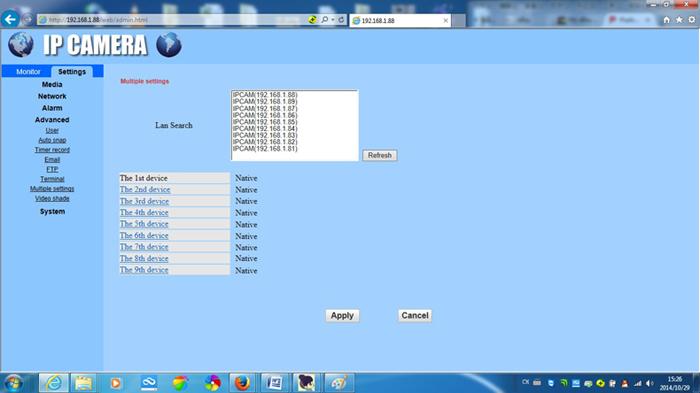Firefox 52 How To Re-Enable NPAPI Plugin Support. Re-Enable NPAPI Plugin Support (i.e. Java) in Firefox 52 - OMG! So while it is still a goofy hack to have to use Chrome with IE and ActiveX underneath, I do. This is an open source plugin that provides ActiveX support for Firefox. Find the download link and download the plugin. Step After the download is complete, close all open instances of Mozilla Firefox and run the setup, which installs the plugin on your computer.
For many, one of the biggest obstacles in is installing applications. Because the computing world has grown so accustomed to click and install, the idea of having to manually install something is very foreign. And that is one of the reasons Firefox and Linux sometimes make for a deadly combination. But it doesn't have to be that way. Installing plugins for the Linux version of isn't that difficult.once you know what you are doing. We'll start with the most difficult plugin first.
Post-production assistant. Assistant editor. Assistant editor. Maqbool movie online with english subtitles. Assistant editor. Assistant editor.
This blog post is also available in PDF form as a. Java is a plugin that, unfortunately, requires an entire runtime language to be installed on your machine.

To do this you need to install either or Java Runtime Engine (JRE) ( NOTE: There is also a Blackdown version of JRE, but at the time of this writing, its site was down so no link could be provided.). Once you download the file, you will first have to open up a terminal window (yes you are going to have to run a few simple commands) and su to root.
Once you are the root user, you will issue the following commands from within the directory where you saved the self-extracting file: chmod u+x jre-XXX-rpm.bin./jre-XXX-rpm.bin rpm -ivh jre-XXX.rpm where XXX is the release number and architecture. You should not get any errors. Once you have done the above, it's time to help Firefox to work with the new runtime environment you just installed. You're going to have to create a symbolic link to a specific file within the JRE environment. The symbolic link will be created inside your browser's plugin directory. You can do this two ways: globally or per-user. If you are the only user on the machine, it's best to do it in your ~/ directory.
Let's do it that way. As your normal user, issue the command cd in the terminal window. That command will change you to your home directory. Next, issue the command cd.mozilla/plugins. Now you are in the correct directory to make your symbolic link. You need to first find the file libjavaplugin_oji.so on your machine.
To find that, run the command: locate libjavaplugin_oji.so When I run the command I get the results: /usr/java/jre1.6.0_02/plugin/i386/ns7/libjavaplugin_oji.so Your results may vary. So now that I know where the file is, I issue the command that will make a soft link to the correct file. Ln -s /usr/java/jre1.6.0_02/plugin/i386/ns7/libjavaplugin_oji.so Now, open up Firefox and in the URL location bar, enter about:plugins. You should see a listing similar to that shown in Figure A. Figure A No matter how many applet versions you have listed, Java is now properly installed. And that's that for Java — now on to easier plugins. Flash The plugin is simple. Marathi story book pdf.

All you need to do is for your machine, install the file, and then copy libflashplayer.so to your ~/.mozilla/plugins directory. Let's stick with the rpm-type file. Download the flash-plugin-XXX.i386.rpm file (Where XXX is the release number) and then issue (as root) the command rpm -ivh flash-plugin-XXX.rpm (again, where XXX is the release number) to install flash-plugin. As before, you are going to have to locate the correct file in order to copy it to the plugins directory. Issue the command locate libflashplayer.so.
You should see this in your results: /usr/lib/flash-plugin/libflashplayer.so Change to the ~/.mozilla/plugins directory and run (as root): cp /usr/lib/flash-plugin/libflashplayer.so /home/USERNAME/.mozilla/pugins (where USERNAME is the actual username). Now, you need to change ownership of the file so it can be used by a non-root user. Do this with the command (run as root from within the /home/USERNAME/.mozilla/plugins directory — where USERNAME is the actual name of the standard user): chown USERNAME.USERNAME libflashplayer.so. Restart Firefox and run the command about:plugins and you should see a listing as shown in Figure B. Figure B Both Futuresplash and Shockwave will be installed with this single plugin installation. Mplayer The mplayerplug-in uses the mplayer application to play movies opened by your browser. Before you install the plugin, you have to have mplayer successfully installed.
Most Popular Articles
- Descargar Los Simpson La Pelicula En Espaol Latino 1 Link Mega
- Luis Cheskin Pochemu Lyudi Pokupayut Fb2
- Kimia Organik Fessenden Pdf To Word
- Rewrite Psp Iso
- Dvd Video Soft Activation Key
- Fleet Maintenance Pro 14 Serial Number
- Video Seans Kashpirovskogo Na Pohudenie
- Makros Na Prostuyu Mishku Pb
- Bumazhnie Modeli Mashin Dlya Skleivaniya
- Download Crack Nfsc Genexxa
- Dinozavri Uchat Shahmatam Torrent
- Obnulenie Kartridzha Hp 3525
- Ds150e New Vci Keygen Generator Online
- Cooling Tower Design Calculation Software